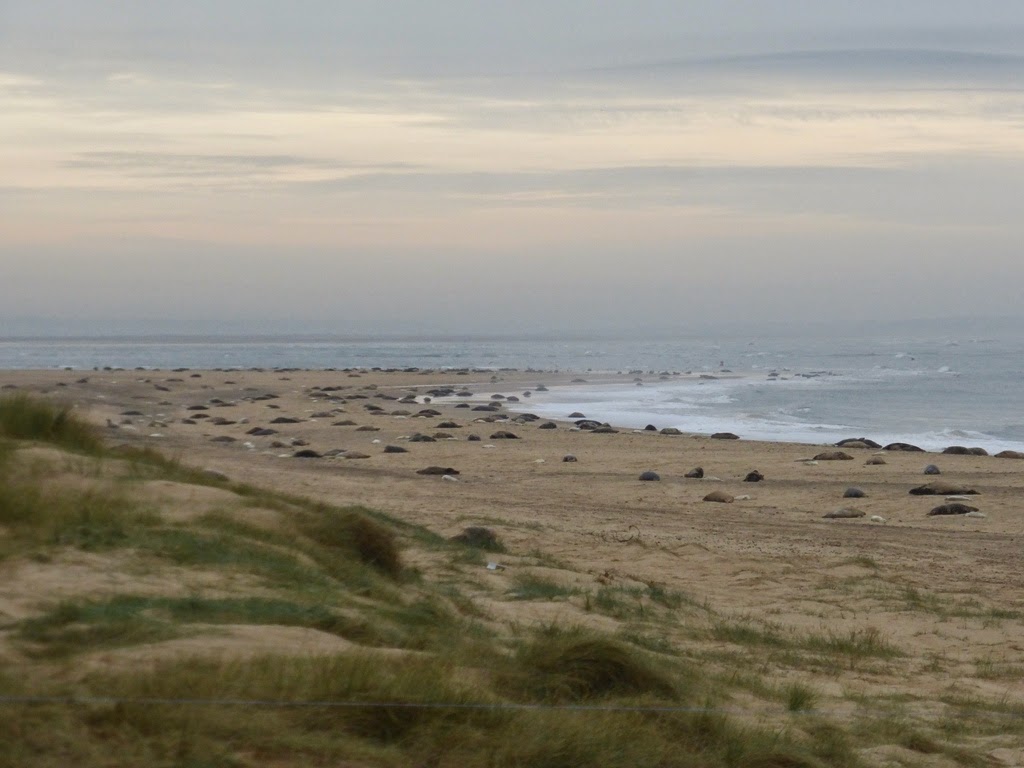At this time of year, the wildlife stars of Blakeney Point are undoubtedly the seals...
... but we haven't forgotten about the Sandwich Terns that breed here in the summer. One of the juveniles that was colour-ringed here by the BTO this summer, has been seen at Tanji on the coast of The Gambia, West Africa - around 3,000 miles from Norfolk.
Newly-ringed chick
This colour-ringing project, started in 2013, has given of us an insight into the post-breeding movements of the Sandwich Terns that breed on Blakeney Point. With birds seen in Scotland, Ireland, France, Holland, Germany and Denmark soon after leaving Norfolk.
While Blakeney Point is experiencing cold British winter weather and hosting thousands of breeding seals, the Sandwich Terns that bred here in the summer are far away in West Africa amongst Caspian Terns, Royal Terns and Grey-headed Gulls...
It's not just Sandwich Terns that are being tracked. This Grey Seal cow is sporting a telemetry tag, fitted in The Netherlands this spring. She is one of four tagged seals from The Netherlands that have turned up at Blakeney since October. This shows just how far seals travel throughout the year. Most of the Grey Seals that breed on Blakeney Point only spend a small part of the year here.
The pupping has peaked and there are now numerous weaned pups spreading out along the Point. This one has made it onto the boardwalk.
We ask walkers on Blakeney Point to be aware that weaned pups will be scattered about the reserve. They have shed their white fur and been left by their mothers. This is natural. Please do not approach weaned pups as going too close will cause distress. And ensure dogs are kept on leads at all times for the safety of both seals and dogs.
Pup moulting its white fur
With many pups weaned or almost weaned, lots of mating is going on in the rookery
With so many seals present, there is many a fight between bulls - some of them have clearly had a rough time
Many cows are noticeably thin having spent three weeks feeding their pups
While the pups have become very round
and have an easy life resting and living off fat reserves
There are a few black pups amongst the rookery
The beach, notably less crowded than last week
The total pup count now stands at 2,382. This puts us significantly ahead of Donna Nook, Lincolnshire (1,798) and The Farne Islands, Northumberland (1,651).
- Ajay (with photographs by Sarah and Paul)
.jpg)
.jpg)






















































